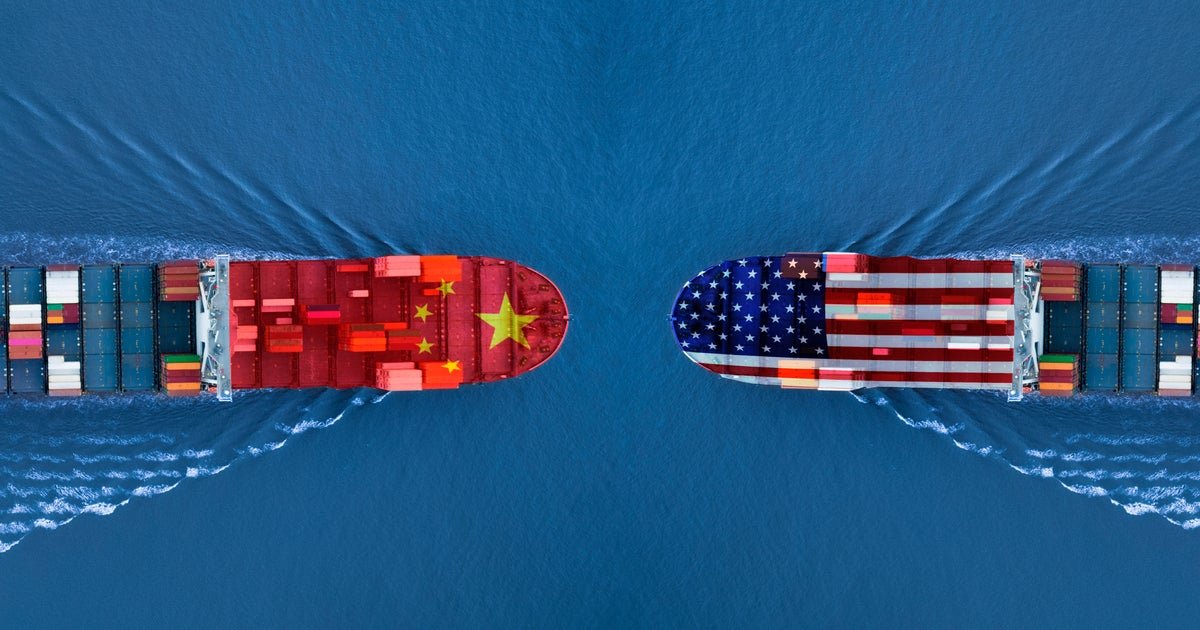[ad_1]
A tariff truce between the U.S. and China announced on Monday will offer companies some relief, but also prolong the kind of economic uncertainty that makes it hard for businesses to plan for the future.
Beginning May 14, the U.S. will lower its maximum tariff rate on Chinese imports from 145% to 30%, including a 10% baseline levy plus a fentanyl-specific 20% levy. China will reduce its 125% tariff on American goods to 10%.
But clinching a long-term trade deal is likely to prove challenging, while the reduced 30% tariff rate could still lead to price hikes for consumers, experts told CBS MoneyWatch.
“It remains to be seen whether the U.S. and China can agree to a trade deal that keeps tariffs from rebounding in 90 days,” analysts with Gavekal, an investment research firm, said in a report. “So far, only the U.K. has reached an agreement with the U.S., and that doesn’t tell us much.”
Is the 30% tariff permanent?
No. Absent a formal trade deal, there’s no guarantee that President Trump won’t again raise tariffs on China once the truce expires after 90 days and that Beijing won’t also retaliate. U.S. Treasury Secretary Scott Bessent called the new baseline tariff a “floor” in an interview with Bloomberg Surveillance.
“This is just a 90-day pause that allows the two countries to work toward a deal,” supply-chain expert Sina Golara, an assistant professor at Georgia State University’s Robinson College of Business, told CBS MoneyWatch.
Is a 30% tariff on Chinese imports still high?
Under the agreement, the U.S. will lower tariffs on Chinese goods from as much as 145% to 30%. Still, that represents a steep hike on the level of U.S. levies on China before Mr. Trump took office.
“If you look at where we were pre-‘Liberation Day’ or when Trump took office, this ‘agreement’ is just a baseline tariff increase to 30% across the board,” said Alex Jacquez, chief of policy and advocacy at Groundwork Collaborative, a left-leaning public policy think tank, referring to the phrase President Trump used in announcing a barrage of tariffs on April 2. “While it’s a walk-back from the prohibitive 145% tariffs, it still leaves us no closer to any concessions or renegotiations vis-à-vis China than we were.”
Tariff rates aren’t the only potential sticking points as the countries continue to negotiate.
“The two countries have a lot of grievances in many dimensions, so it’s not just tariff rates,” Golara noted. “It’s where they strand on other trade barriers, the trade imbalance, and the U.S. accusing China of currency manipulation, so there’s a lot to discuss. It makes sense for them to want to take more time.”
What does the U.S-China truce mean for economic growth?
There’s good news here: If both countries’ reduced tariffs remain in place, consumer confidence is likely to improve and boost spending. That should help contain U.S. inflation and help support the job market, according to Oxford Economics associate economist Grace Zwemmer.
The announcement also reduces the odds of the U.S. economy entering a recession this year, according to experts. Oxford Economics chief U.S. economist Ryan Sweet lowered his forecast for a recession to 35% from more than 50%.
Will shipments from China start flowing again?
Large and small businesses alike in the U.S. have warned that higher tariffs will raise consumer prices, while some companies have canceled orders from Chinese factories because of the high levies.
“It’s very clear that Trump was staring down the barrel of a huge drop in imports from China across the busiest shipping season, as companies build inventory for Christmas and the holiday season,” Groundwork Collaborative’s Jacquez told CBS MoneyWatch. “There were more announcements from companies about burning through their inventory and having to pass costs to customers, or having to cease importing from China.”
Freight shipments from China are expected to surge during the 90-day tariff pause, as companies bulk up their inventories to guard against the trade talks foundering and levies rising. As a result, shipping rates will rise, and squeeze smaller businesses, whose margins are already thin.
“Right now, you’ll see a huge rush in trying to get imports in from China in this 90-day period. That will strain shipping logistics just as it did in Covid, when everything opened back up,” Jacquez said.
Will consumer prices still rise?
Businesses still face added costs with 30% tariffs in place, and they are likely to pass some of those expense onto consumers. But the price hikes could be less substantial depending on how companies handle tariffs, according to Georgia State University’s Golara.
“If we have a mix of some companies handling tariffs well, we won’t see broad-based inflation rise to a painful level. We might see pocketed effects in different and specific products and sectors,” he said.
Other experts agree the pause is good news for companies and consumers.
“The tariffs were so punishing that it was creating this incentive not to import anything from China,” Veronique de Rugy, a senior research fellow at the Mercatus Center at George Mason University told CBS MoneyWatch. “The announcement is also good news because it means supply is not going to be as restrained as it was.”
It doesn’t mean the U.S. it completely out of the woods, though. “It’s still a significant increase in taxes for American consumers. We are still in a worse position than we were,” de Rugy said.
How are companies reacting?
Businesses are still grappling with significant economic uncertainty, making it hard to plan for the future.
“If you’re a small business and don’t know what your inputs will cost next week or in 90 days, it’s going to be extremely difficult to do business in this uncertain environment,” Jacquez said.
Kim Vaccarella, founder and CEO of Bogg, a U.S-based beach bag and accessories company that makes its products in China, has been scrambling to shift at least some of its manufacturing to Vietnam and Sri Lanka because of the Trump administration’s stepped-up tariffs.
“We were looking at alternatives and set up viable sources in both countries, and we were working toward manufacturing there,” she told CBS MoneyWatch.
Then came The White House’s announcement on Monday. With the U.S. earlier this year having raised its country-based tariffs on Vietnam and Sri Lanka to o46% and 44%, respectively, China may again be Vaccarella’s best option.
“Now we are back to square one, because at 30% it’s less expensive to manufacture in China,” she said. “If tariffs stay at 30% or go lower, it just looks like we spent a lot of money quickly trying to ramp up production somewhere else, because that would have been more acceptable under this current nightmare.”
A leading index of small business optimism has fallen every month this year, although it remains above its levels before the November presidential election.
Vaccarella had warned customers that the price of her company’s bags could jump as early as July. “But 30% we can work with,” she said. “There might have to be a small increase, but it won’t be what it would have been at 145%.”
[ad_2]



